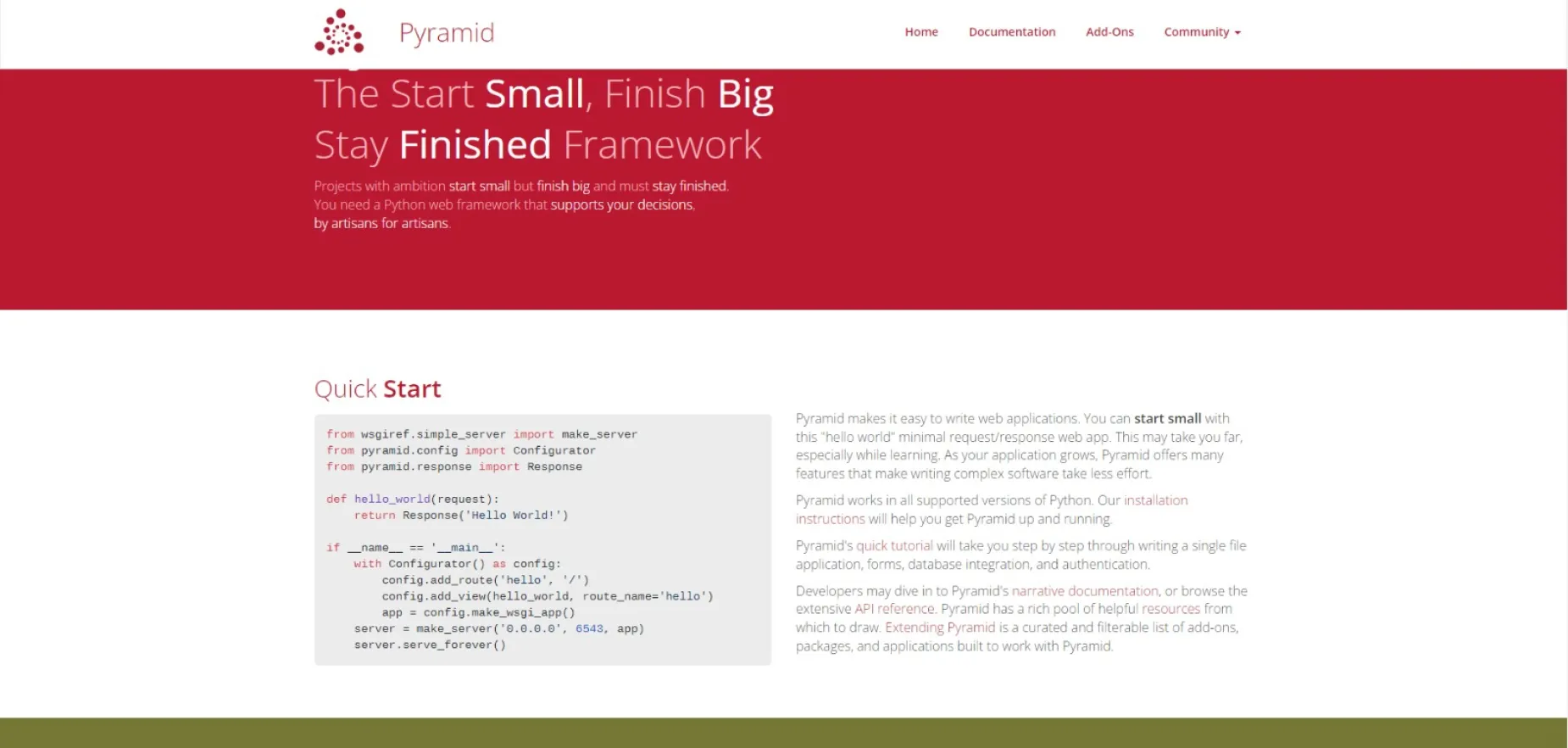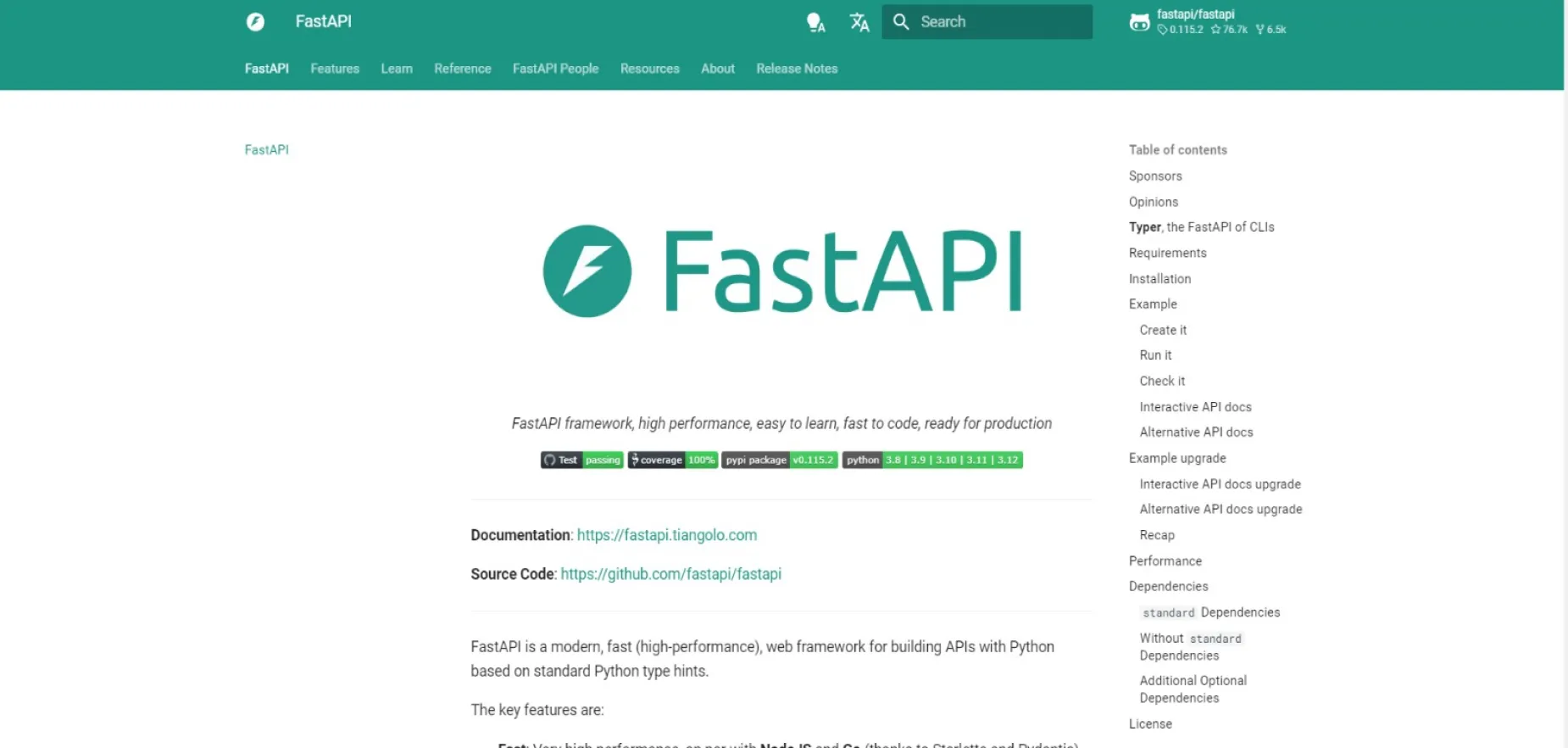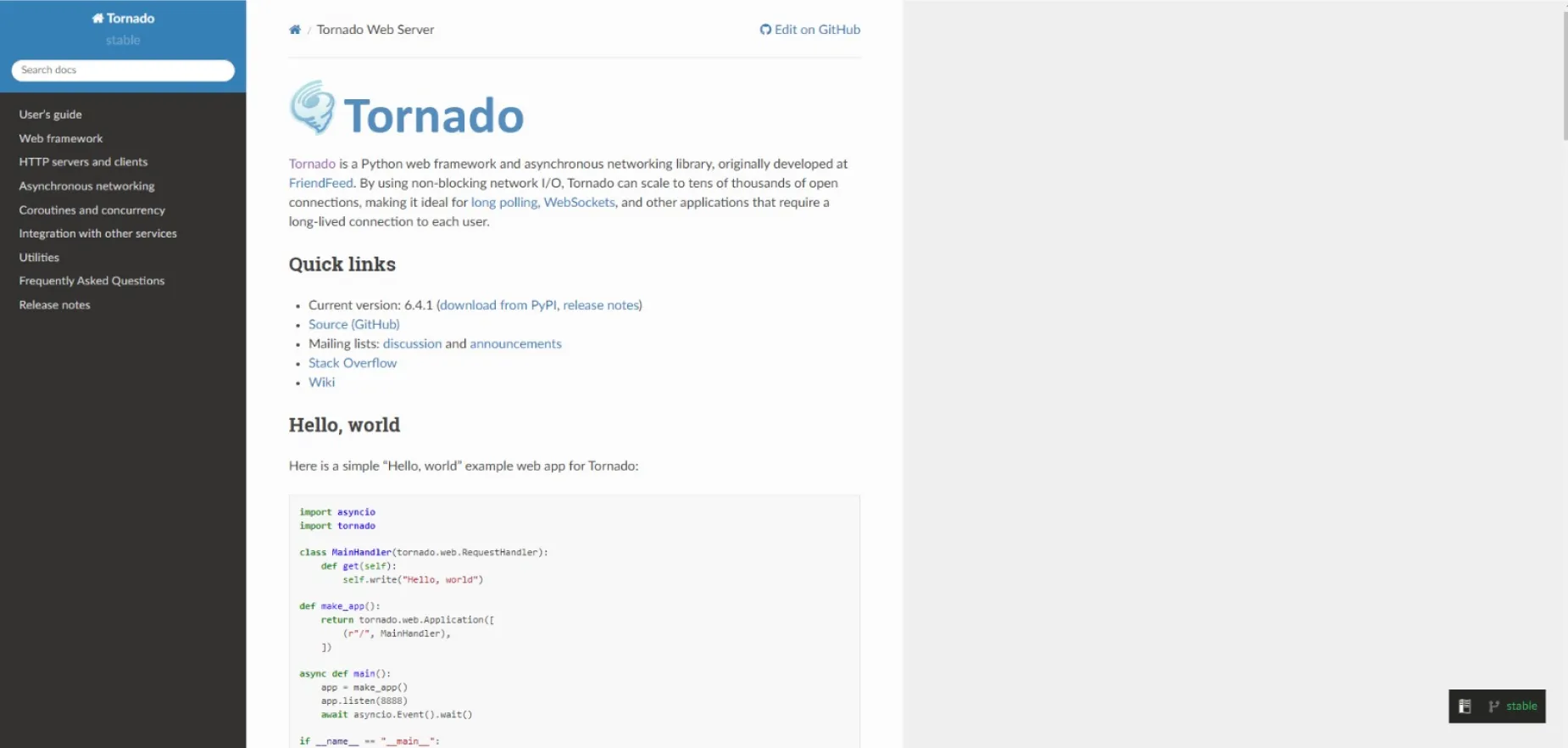
Best Python Frameworks for Web Development
Introduction
Python has quickly risen to prominence as one of the most popular programming languages in the world, and it’s easy to see why. Its simplicity, readability, and vast library support make it a top choice for developers across industries. When it comes to web development, Python offers a plethora of powerful frameworks designed to simplify the development process, speed up deployment, and enhance scalability.
But with so many frameworks available, how do you choose the right one for your project? The framework you select can greatly influence not only the speed of development but also your app’s performance, scalability, and long-term maintainability. In this article, we’ll dive deep into some of the best Python frameworks for web development—each with its own strengths, tailored for different types of projects.
Whether you’re looking for a full-stack framework to handle complex applications or a microframework that gives you complete control, this guide will help you navigate your options and make an informed decision.
Top 6 Best Python Frameworks for Web Development
Navigating the web hosting landscape in the UAE can be a bit daunting, but choosing the right platforms can make your search much easier. Let’s explore the top five hosting providers that shine in the UAE market. Each one offers unique features designed to meet the diverse needs of users, whether you’re running a small business, maintaining a blog, or launching an e-commerce site. With local performance from AEServer and the user-friendly interface of Bluehost, you’ll find the perfect hosting solution to suit your requirements. Check out these platforms to ensure your website gets the support it needs to succeed in the UAE!

Django
When it comes to full-stack Python frameworks, Django is undoubtedly the frontrunner. Originally developed in 2005, Django has continuously evolved into one of the most widely used frameworks for building scalable, secure web applications. Its “batteries-included” philosophy means that it comes with all the essential tools right out of the box, allowing developers to hit the ground running. If you’re tackling complex, high-traffic web projects, Django is often the go-to choice.
Why It’s Great
What sets Django apart is its ability to streamline the development process. Imagine having all the tools you need to build a robust web application without the hassle of searching for external libraries or packages. Django allows developers to move swiftly from the initial idea to deployment, freeing them from the burden of reinventing the wheel.
Built-in functionalities include an ORM (Object-Relational Mapping) system for database interactions, user authentication, URL routing, and even an admin interface for easy management of your application. This means you can focus on what really matters—crafting a great user experience.
Statistics
Let’s talk numbers, because they tell an impressive story:
Popularity: According to the 2023 Stack Overflow Developer Survey, Django ranks among the top 10 most loved web frameworks, with over 48% of developers expressing interest in continuing to use it. That’s a clear indication of its popularity and reliability in the developer community!
Speed: A study by JetBrains revealed that 62% of Python developers prefer Django specifically for its ability to handle heavy workloads and complex applications quickly. In today’s fast-paced world, speed is essential, and Django delivers.
Community: With over 80,000 stars on GitHub, Django boasts a thriving community that is continuously contributing to its improvement. Whether you encounter a bug or need a new feature, there’s a good chance someone in the community has already addressed it.
Usage: Major tech players like Instagram, Pinterest, and Mozilla trust Django for their large-scale applications. The framework’s ability to handle significant traffic and user data makes it a proven choice for demanding projects.
Ideal Use Cases
Django truly shines in scenarios where speed, security, and scalability are critical. Here are a few industries where Django is making a significant impact:
E-commerce platforms: Building a marketplace or a high-traffic online store? Django’s ORM and robust security features make managing user data and transactions seamless. You can rest easy knowing that your customers’ information is well-protected while you focus on enhancing their shopping experience.
Social networks: Take a cue from Instagram, which uses Django to handle millions of users efficiently. Its architecture is designed to scale effortlessly, making it an excellent choice for social networking apps that require real-time interactions and updates.
Content management systems (CMS): Platforms like Pinterest leverage Django’s capability to manage massive amounts of content. Whether you’re curating articles, images, or user-generated content, Django ensures that everything runs smoothly and is delivered efficiently to users.
Pro Tip
One of Django’s standout features is its ORM, which simplifies database interactions significantly. Imagine not having to write complex SQL queries for every database operation! With Django’s ORM, whether you’re using MySQL, PostgreSQL, or SQLite, you can interact with your database using simple Python code. This not only speeds up development but also reduces the risk of SQL injection attacks, enhancing your application’s security.

Flask
Why it’s Great
Flask’s minimalist design allows developers to have complete control over their web applications. Its unopinionated approach means you can decide what libraries, extensions, and tools to use, providing the perfect balance between simplicity and flexibility.
Statistics
Popularity: According to the 2023 JetBrains Python Developer Survey, Flask ranks as the second most popular Python framework after Django, with 47% of developers choosing it for small to medium-sized applications.
Speed of Adoption: Flask has seen a steady increase in adoption, with its GitHub repository amassing over 63,000 stars, highlighting its widespread use in the developer community.
Market Usage: Flask is used by leading tech giants like LinkedIn, Netflix, and Airbnb, showcasing its capability to power both small applications and enterprise-level platforms.
Growth: The demand for Flask developers has risen by 23% over the last year, according to reports by Indeed and Glassdoor, as companies seek more flexibility in their web development projects.
Ideal Use Cases
Flask’s minimalistic approach makes it an excellent choice for small to medium-sized applications where you don’t need the overhead of a full-stack framework like Django. It’s also perfect for projects that require a high level of customization or integration with third-party services.
APIs and Microservices: Flask’s lightweight nature makes it ideal for building RESTful APIs and microservices. You can quickly spin up an API service without worrying about unnecessary features slowing things down.
Prototyping: If you’re working on a prototype or MVP (Minimum Viable Product), Flask’s simplicity allows for rapid development, helping you get to market faster.
Enterprise Projects: Companies like LinkedIn use Flask to power parts of their platform that don’t require the full-stack complexity, benefiting from Flask’s modularity and scalability.
Pro Tip
Because Flask is a microframework, you’ll need to add features like authentication or database management yourself. Luckily, Flask has a wide range of extensions, such as Flask-SQLAlchemy for database handling and Flask-Login for user authentication, allowing you to pick exactly what your project needs.

Pyramid
Sitting comfortably between the full-stack features of Django and the minimalism of Flask, Pyramid is a flexible and powerful framework that can scale up or down depending on the project’s needs. Originally released in 2010, Pyramid offers a “best of both worlds” approach, giving developers the tools to start small but also the capability to grow the application as it becomes more complex.
Why it’s Great
Pyramid is highly modular, which means you can start with just the essentials and then add components as needed. It supports both small applications and large-scale projects, making it a versatile choice for developers who may need to scale. It also comes with excellent documentation, which significantly reduces the learning curve.
Statistics
Popularity: Pyramid is favored by developers working on both small and enterprise-level projects, with a 10% market share among Python developers who need flexibility in application scaling, according to the Python Developer Survey 2023.
Performance: Pyramid has been recognized for its scalability and performance, especially in complex applications, with 95% of developers on Stack Overflow who use Pyramid citing its ability to handle diverse projects.
Adoption by Companies: Pyramid powers well-known platforms like Mozilla, Reddit, and Dropbox, proving its capability to handle massive amounts of user data and traffic while maintaining high performance.
Community: Pyramid boasts a community size of over 6,000 contributors on GitHub, making it a reliable framework with continuous improvements and updates.
Ideal Use Cases
Pyramid’s strength lies in its adaptability, making it suitable for projects of varying sizes and complexity. Whether you’re building a small web app or a complex enterprise solution, Pyramid’s modular architecture allows you to choose the components you need without unnecessary overhead.
Enterprise Applications: Companies like Mozilla use Pyramid for its ability to scale and integrate with multiple databases and authentication systems, making it ideal for large, data-intensive applications.
Content-Heavy Platforms: Pyramid’s flexibility makes it a great choice for content-driven websites like Reddit, where user-generated content needs to be managed efficiently.
Custom Applications: Pyramid’s unopinionated structure means you can tailor it to fit unique project requirements, giving you full control over your application architecture.
Pro Tip
One of Pyramid’s standout features is its traversal-based routing system, which allows you to map URLs directly to your application’s data. This is particularly useful in applications that deal with hierarchical data, such as file systems or document management systems.

FastAPI
Why it’s Great
FastAPI boasts an intuitive syntax and is built on Starlette for the web part and Pydantic for data validation. Its automatic interactive API documentation with Swagger UI or Redoc saves time, making it extremely developer-friendly. With built-in support for asynchronous programming, FastAPI significantly enhances performance, particularly in applications that need to handle large numbers of requests simultaneously.
Statistics
Performance: Benchmarks show that FastAPI is capable of handling up to 700% more requests per second compared to traditional synchronous frameworks like Flask and Django, thanks to its async capabilities. According to Techempower benchmarks, FastAPI ranks among the top 5 fastest web frameworks.
Popularity: FastAPI has rapidly climbed the ranks, with over 67,000 stars on GitHub in just a few years. In the 2023 Python Developer Survey, it was noted that over 22% of Python developers are now using FastAPI, making it one of the fastest-growing frameworks.
Adoption: Companies like Netflix, Uber, and Microsoft have adopted FastAPI for various internal and external projects, proving its effectiveness in real-world applications.
Efficiency: FastAPI’s ability to reduce the time required for development by as much as 40% makes it a top choice for teams looking to deploy faster without compromising on performance.
Ideal Use Cases
FastAPI is best suited for projects where performance is a priority. Its asynchronous nature allows it to handle a large volume of requests without performance bottlenecks, making it a perfect fit for APIs, microservices, and data-driven applications.
Real-Time Applications: FastAPI excels in applications that require real-time data processing, such as chat apps, streaming services, and live dashboards.
Machine Learning & Data Science APIs: FastAPI’s ability to handle large datasets efficiently makes it an excellent choice for building APIs that serve machine learning models or manage big data.
Microservices: Its lightweight and asynchronous architecture is perfect for building microservices that need to interact with each other at high speeds.
Pro Tip
FastAPI comes with automatic generation of OpenAPI documentation, making it incredibly easy to create and maintain robust API documentation. This is particularly useful for teams working on large projects where clear API communication is essential.

Tornado
Tornado is a Python web framework and asynchronous networking library known for its ability to handle real-time web applications with an incredible capacity to manage thousands of simultaneous connections. Originally developed by FriendFeed (later acquired by Facebook) in 2009, Tornado stands out because of its non-blocking, event-driven architecture, making it ideal for projects requiring long-lived connections such as WebSockets.
Why it’s Great
Tornado’s standout feature is its support for asynchronous networking. Unlike traditional frameworks that follow a synchronous request-response cycle, Tornado can manage a massive number of open connections concurrently, without consuming too many system resources. This makes it especially well-suited for applications like real-time messaging, live updates, and interactive user experiences where low latency is critical.
Statistics
Concurrency: Tornado can manage 10,000+ simultaneous connections using minimal memory, thanks to its non-blocking I/O. In performance benchmarks, Tornado consistently outperforms other Python frameworks when it comes to handling high-concurrency situations.
Popularity: While not as widely used as Django or Flask, Tornado maintains a loyal base with over 21,000 GitHub stars, and it is praised for its capability to handle specific use cases that require real-time communication.
Adoption: Tornado powers parts of Facebook, Quora, and Zynga, highlighting its use in large-scale, high-traffic platforms that require fast, real-time interactions.
Performance: Tornado’s event-driven architecture ensures it ranks high in Techempower benchmarks for web frameworks, especially for handling WebSockets and long-polling.
Ideal Use Cases
Tornado’s real strength lies in its ability to handle real-time interactions and live updates. It’s not just a general-purpose framework but a specialized tool for applications that need constant communication between the client and the server.
WebSockets: If your application requires constant two-way communication between the client and server—think chat applications, gaming platforms, or real-time dashboards—Tornado’s WebSocket support is second to none.
Live Updates: Tornado excels at delivering live notifications or updates. Platforms like Quora and Facebook use it to push updates to users without them needing to refresh the page.
Streaming Services: Tornado’s ability to handle asynchronous I/O makes it a perfect fit for streaming services, whether it’s real-time video or data streams.
Pro Tip
While Tornado is excellent for handling large numbers of simultaneous connections, it’s worth noting that it requires an understanding of asynchronous programming. If your application doesn’t need to handle thousands of live connections, you might be better off with a simpler framework like Flask or FastAPI.

Web2py
Web2py is a versatile, open-source Python web framework that focuses on simplicity, speed, and security. Launched in 2007, Web2py is unique in that it comes with its own integrated development environment (IDE), making it easy for developers to start coding without needing to install additional software. Known for its emphasis on security, Web2py automatically takes care of things like input validation and protection against common vulnerabilities like SQL injection.
Why it’s Great
Web2py’s standout features are its ease of use and security-first approach. With no external dependencies required, Web2py can be run straight out of the box, even on a USB stick. Its integrated ticketing system helps debug applications by automatically reporting issues, while its emphasis on security ensures that developers can focus on coding without worrying about security loopholes.
Statistics
Adoption: Web2py has maintained a steady following, with over 4,500 GitHub stars. Though it’s not as popular as Django or Flask, it’s beloved by developers who value security and simplicity.
Performance: Web2py is designed to be fast and efficient, boasting minimal configuration times. It’s lightweight, yet powerful enough to handle complex web applications. According to the Python Developer Survey 2023, around 5% of Python developers still rely on Web2py for its security features.
Security: Security is one of Web2py’s strongest suits. It comes with built-in safeguards against CSRF (Cross-Site Request Forgery), SQL Injection, and XSS (Cross-Site Scripting), making it one of the most secure Python frameworks available.
Simplicity: Web2py’s self-contained IDE makes it incredibly simple to set up, requiring only minutes to get started, compared to the more complex configuration required by frameworks like Django.
Ideal Use Cases
Web2py is an excellent choice for developers who prioritize security and need a framework that requires minimal setup. It’s ideal for small to medium-sized applications, particularly those that need to be built quickly while maintaining robust security measures.
Educational Platforms: Web2py’s simplicity and built-in IDE make it a great option for educational institutions looking to teach web development without the overhead of configuring complex environments.
Data-Driven Applications: With its integrated ORM and database abstraction layer, Web2py simplifies the handling of complex data, making it a good choice for data-driven applications.
Security-Sensitive Applications: Web2py is a top choice for applications that handle sensitive user information or financial transactions, thanks to its automatic security features.
Pro Tip
Web2py’s emphasis on security and ease of use makes it an ideal choice for developers who are less experienced with web development or those who need to deploy secure applications quickly. Its built-in admin panel also helps manage databases and workflows efficiently without needing to write complex code.
Conclusion
In the ever-evolving world of web development, selecting the right framework is crucial for your project’s success. Whether you’re a seasoned developer or a beginner, there’s a Python framework to suit your needs.
Django shines as a comprehensive, full-stack solution ideal for large applications, while Flask offers lightweight flexibility for smaller projects. For those who seek balance, Pyramid allows you to start small and scale as needed. If speed is your focus, FastAPI excels with its asynchronous capabilities for handling numerous requests.
Tornado is perfect for real-time applications, managing long-lived connections effortlessly, and Web2py emphasizes simplicity and security, making setup a breeze.
Ultimately, the best framework depends on your project requirements and team expertise. Explore these frameworks, dive into their documentation, and build small projects to find the right fit for your web development journey. With Python at your side, the possibilities are endless. Happy coding!
Author Bio
Alex Carter, a seasoned content writer with a talent for crafting impactful stories across various industries. He combines creativity and strategic insights to create engaging content that resonates with readers.
